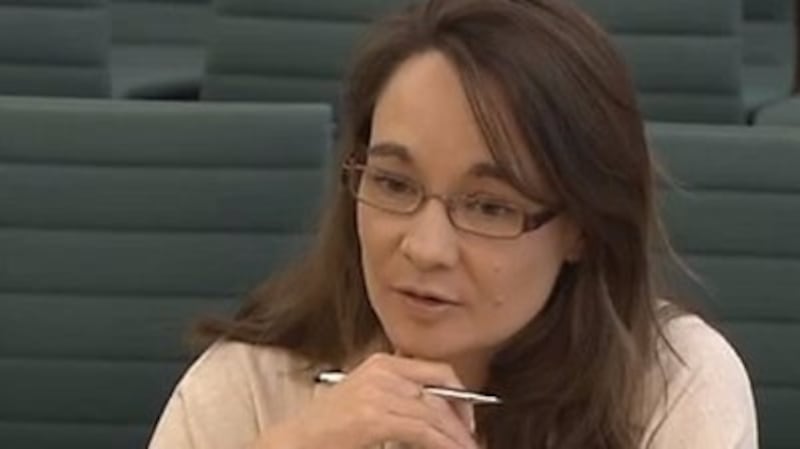Friday's agreement between the European Union and the United Kingdom on the first phase of the Brexit negotiations is a major achievement, especially since London had worked hard to downplay the deep complexity of the Northern Ireland/Ireland issue.
For months, it had stated that it had no intention of putting a “hard border” across the island of Ireland and that, quite frankly, it did not see the need for such a border to exist in the first place. This, of course, was part of the problem.
The inevitability - nay, the unavoidability - of a hard border if the UK (and with it Northern Ireland) leaves the single market and has no customs union with the EU has really never properly been countenanced by the British government.

If the UK wishes to have a different, more "liberated", relationship with the EU in the future then difficult choices have to be made about how to manage the consequences of that for Northern Ireland. This joint report manages to put off the making of those difficult choices for now and instead sets some fortified boundaries to limit the damage that those choices could cause.

The joint report is not, therefore, an exercise in “constructive ambiguity”; it is entirely unambiguous in many respects. Where it gives the impression of haziness is in the fact that the report allows for three quite different scenarios.
Each scenario is underpinned by unwavering assertions: the UK is leaving the single market and customs union, the UK guarantees to avoid a hard border, the practical implementation of the 1998 Agreement will be unaffected.
Seeking the impossible
The first scenario is the one that the UK wishes to see: the future UK/EU trade deal is constructed in such a way as to allow for there to be no hard border either down the Irish Sea or along the Irish Border. The problem, of course, is that it is not possible to have a trade deal that manages to cover the full set of commitments that the UK has agreed to here.
Even a deep and comprehensive free trade agreement does not allow for the incorporation of the acquis communautaire, or the accumulation of EU law, which - the report notes - is essential to the continuation of North/South cooperation. Neither does it avert the need for customs controls and checks.
Even if the UK was so “fully aligned” in its regulations as to be in the single market, there would be a need for a customs border between the UK and the EU. These controls would mean declarations of import/export (for compliance with standards and rules of origin, and tracking for VAT-exemption) and the payment of duties.
The border between Norway and Sweden is a good example of what this border looks like - and a smoothly run one at that. It entails approved and unapproved roads, efficiently-run and coordinated customs services, and physical infrastructure. Plenty of it.
So, if the realisation dawns that an UK/EU free trade agreement cannot guarantee a frictionless border, we move into Scenario 2, in which the UK will “propose specific solutions to address the unique circumstances of the island of Ireland”. There is no explanation of what these solutions might be, but in actual fact everything hinges upon them.
Subsequent paragraphs assume that these solutions can be found and require that they will include necessary oversight mechanisms to ensure that the integrity of the single market and customs union is preserved.
The report allows for the Northern Ireland executive and assembly to put in place “distinct arrangements” if they are necessary to uphold the 1998 Agreement. The assertion here that Northern Ireland businesses would retain “unfettered access” to the British market is reassuring for west to east flows.
The implications for flows in the other direction (Britain to Northern Ireland) would depend on the future trading and regulatory decisions of the UK.
‘Full alignment’ option
Scenario 3 is one in which there are no "agreed solutions" to this highly complex situation. In which case, the UK has committed to "maintaining full alignment" with: "those rules of the Internal Market and the Customs Union which, now or in the future, support North-South cooperation, the all-island economy and the protection of the 1998 Agreement".
The prime minister may assure her Cabinet that this alignment is confined to Northern Ireland/Republic of Ireland specific areas, but in actual fact, these conditions have extraordinarily broad implications.
So, there is an overwhelming incentive now for the UK government to find those “specific solutions” in Scenario 2 working. These solutions will need to be flexible and imaginative as they will have to entail a distinctive treatment of the region of Northern Ireland both in terms of the single market and the customs union.
The dedicated strand on Ireland and Northern Ireland in phase two of the Brexit talks is going to require just as much stamina as phase one. At least now there is a firm set of commitments to work from.
* Dr Katy Hayward is a political sociologist at Queen's University Belfast, and author of Bordering on Brexit: Views from Local communities in the Central Border Region.










